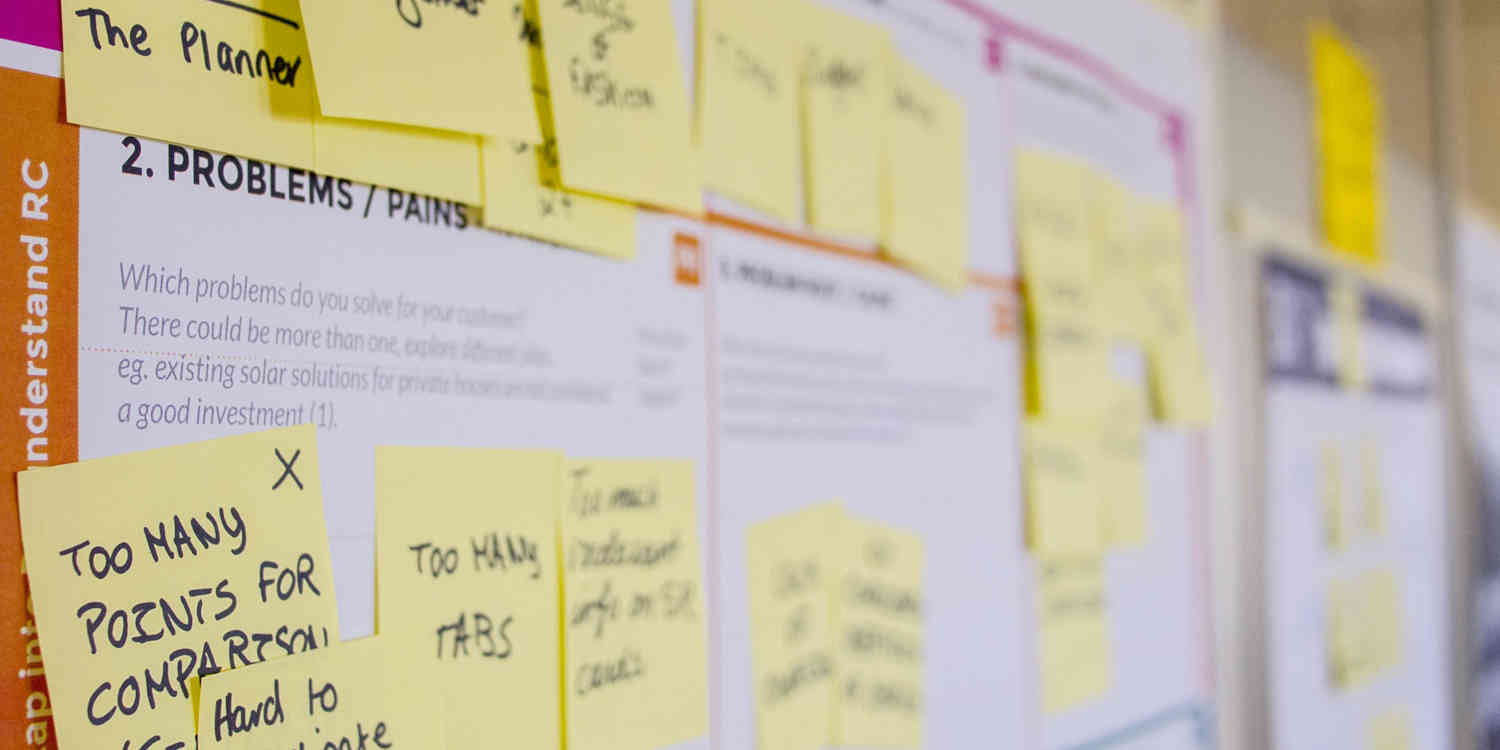
MVP Development For Enterprises
Minimum viable products (MVPs) are all the rage in product development circles and among businesses of all sizes. So what are they? MVPs are learning tools designed to provide value to users and unlock critical early insights into your product as well as the fastest path to revenue relevance.
Because the term MVP is so closely associated with Eric Ries and his Lean Startup Methodology, it’s usually discussed in relation to startups. That said, enterprise businesses can also reap the benefits of the early learning and product insights an MVP can provide. Angel Almada, Director of Enterprise Program Management at 3Pillar Global says, “An MVP can help any company regardless of size or maturity, as it can be used as a tool for the ramping up of a new product.”
While there are many similarities between startups and enterprises in terms of how to approach researching, building, and launching an MVP, there are also some critical differences. This article will discuss essential concepts to keep in mind when it comes to MVP development for enterprises.
Embrace An Agile Mindset (With Caveats)
When developing product ideas, some scaled agile frameworks, such as Nexus, SAFe, and LeSS, are specific to enterprises you can use. Enterprises have established their brand identity already, and existing customers have a certain level of expectations that you cannot violate without risking that relationship.
Instead, enterprise MVP development starts with research to better understand the customer segment and their priorities. Enterprises must ensure the MVP is high quality and produces value without investing in a complete solution. An article by DevTeam states, “You build an MVP with the least number of features, and your focus is to build a working product as quickly as possible.”
MVP development for enterprises requires striking a balance between producing value for your desired market segment and simultaneously ensuring it remains cost-effective. Ultimately, this balance reduces the time to market and gives you a greater understanding of the market through the use of the MVP.
Remember, your MVP is not a prototype but a fully formed product with minimal features.
Achieving stakeholder buy-in and practicing rapid iteration of your enterprise product idea can be tricky, but it’s crucial to find a way. A Proof of Concept (POC) is one way to get your stakeholders on board while also showcasing your product’s capabilities. What’s more, incorporating wireframes will demonstrate what the MVP might look like and how it might function. Providing wireframes can give stakeholders very real insights into how your MVP is a product that has surpassed the idea stage. This approach generates confidence, increases buy-in, and yields a solid plan that allows you to begin developing your enterprise-level MVP.
Scott Varho, SVP, Product Development, 3Pillar, says, “Getting the governance structure right and giving the product access to the necessary resources tends to be difficult for large enterprises. Someone needs to make decisions about what the insights mean and how that impacts the current plan. Changes may require work from other teams that have their own leaders, agendas, and commitments. Minimizing these overlaps is key to getting a market result for the MVP. You want to learn the market potential for this product, not how your internal organization does or does not support the MVP.”
Rethink Your Relationship to Perfection
Remember, in the Agile world, perfect is the enemy of done. Enterprises tend to strive for perfection before release, which frequently hinders the speed to value, quick wins, and insights you can gain. Truthfully, when it comes to MVP development for enterprises, perfectionism is counterproductive and inefficient.
Forbes describes the usual process for feature approval that’s followed in enterprise businesses: “After long requirements gathering and stakeholder analysis sessions, specs are sent to technical teams who then spend months or years building features to meet the instructions they were given. In today’s rapidly changing and increasingly competitive business landscape, this approach will fail due to its inherent lethargy and inefficient allocation of technical resources.”
In a similar vein, enterprises tend to embrace a “more is more” philosophy when it comes to features. This won’t work when developing an MVP for enterprise, as it violates the “minimum” condition. According to MaxCode, “Successfully implementing MVP-driven approaches in large organizations requires a mindset shift towards how to learn about required features in a structured way. The goal should change from releasing complete products to learning about the product throughout the release cycle and focusing future investments towards functionalities that have the greatest ROI possible.”
Launching An Enterprise MVP
While finding early adopters can be a conundrum for startups, this is much easier for enterprise MVP development, thanks to a built-in customer base. Cassi Lup, Senior Manager, Product Development at 3Pillar, shares: “Large enterprises have a larger pool of early adopters they can engage ‘on the side’ within their organizations, whereas startups need to engage with the market earlier.” However, branding can be a more complex endeavor, as enterprise businesses need to juggle their existing brand identity with their messaging around their MVP/new offering.
Michael Rabjohns, UX Practice Leader (US) at 3Pillar, says: “For example, say Marriott wants to launch an MVP. How will it coexist with or within Marriott’s existing digital presence? Does it align with Marriott’s branding, etc.? A startup probably won’t have to worry about this because they wouldn’t yet have an existing digital presence.”
Aside from keeping current customers happy, you want to make sure you keep your internal operations running smoothly as you begin developing your enterprise MVP. DevTeam explains that enterprises developing an MVP must “ensure that you have enough competent people to support your core business applications so that the MVP development project doesn’t stretch your maintenance team too thin. Assigning both maintenance and MVP development to the same team could create priority conflicts.”
Be Proactive
Plan ahead to avoid problems down the line. Startups can launch their MVP first and redesign it later for scalability. However, enterprises need to think about scalability from the start. There are tools available to plan for scalability while remaining agile in your enterprise MVP development, including:
Product Roadmaps
Any enterprise product roadmap that does not harness and leverage its data is an express lane to obsolescence. If your MVP differentiator wasn’t “smarter product or smarter processes” early on in the development of your product, it must be part of your eventual plan. The disciplines required for data-driven products inherently promote healthier data governance and architectures sufficiently sophisticated to collect data for analysis and KPI measurement.
Value Streams
According to PMI, “The value streams layer encompasses the capabilities required to provide value streams to your customers. A value stream begins, ends, and, hopefully, continues with a customer.” according to PMI. This lets you organize your teams and products by the type of value they are providing, which allows for better coordination and collaboration.
Business Model Canvas (BMC)
According to Harvard Business Review, a BMC “helps organizations conduct structured, tangible, and strategic conversations around new businesses or existing ones.” Your BMC must factor in:
- Key Partner
- Key Activities
- Key Resources
- Cost Structure
- Value Proposition
- Customer Relationships
- Customer Segments
- Channels
- Revenue Streams
Where the left side of the Business Model Canvas—Key Partner to Cost Structure—is external, focusing on your customer, while the right side—Customer Relationships to Revenue Streams—is internal, focusing on your business. The Value Proposition is right in the middle.
Big Hairy Audacious Goals (BHAGs)
According to Growth Institute, a BHAG is “A term coined by Jim Collins and Jerry Porras in their book, Built to Last: Successful Habits of Visionary Companies—is a long-term, 10 to 25-year goal, guided by your company’s core values and purpose.” Some well-known examples of BHAGs include:
- The shared dream of Bill Gates and Paul Allen of “having a computer on every desk and in every home.”
- Google’s dream to “organize the world’s information and make it universally accessible and useful.”
Open source software can be very helpful when it comes to innovation. However, if going the open-source route, you must be aware that many aren’t feasible for enterprise use. Some software lacks the necessary security features and scalability, so research your options before implementing any open source solution.
Conclusion
It’s not only possible for enterprises to develop MVPs, but it can also be incredibly beneficial to embrace this part of an Agile philosophy. Netflix, for example, added interactive experiences to its content library. These shows and movies feature a “choose your own adventure” quality giving the viewer some control over the ending. By bringing these experiences to their existing content, Netflix adds value to a different market segment while evaluating if they can expand and possibly break into gaming.
As Eachan Fletcher, founder and CEO of Nest Egg, writes: “In the enterprise, we have the luxury of working with the confidence that, even if the immediate next set of features don’t quite hit the sweet spot, we’ll be around for many more iterations yet before times start to get tough.”
Ultimately, the MVP development process for a startup differs from that of an enterprise-level company. Still, the overall goal remains the same: launch a great product with minimal features and learn what works and what doesn’t. Enterprises can more easily leverage existing customer bases and tend to have more resources available to streamline the process.
To learn more about 3Pillar’s services and how we can help you create a minimum viable product to test and validate your assumptions with real customers, contact an expert today.
Recent blog posts

Stay in Touch
Keep your competitive edge – subscribe to our newsletter for updates on emerging software engineering, data and AI, and cloud technology trends.






